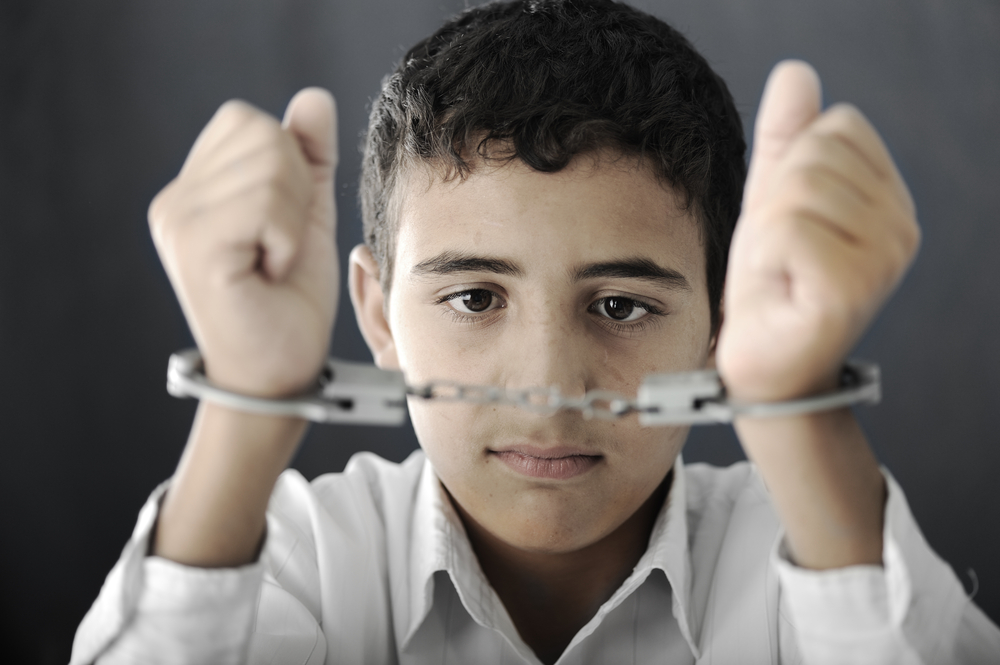![]() Black and Latinx youth in Cook County, Ill. (Chicago) are more likely to go to jail than to go to college. That’s why I have been pondering why our youth are acting in ways that can get them and others in bad situations with the law or worse. Why are our youth from black and Latinx communities more likely to have warrants issued than they are to have an Amber Alert issued about them?
Black and Latinx youth in Cook County, Ill. (Chicago) are more likely to go to jail than to go to college. That’s why I have been pondering why our youth are acting in ways that can get them and others in bad situations with the law or worse. Why are our youth from black and Latinx communities more likely to have warrants issued than they are to have an Amber Alert issued about them?
Mathias H., 12, , of Chicago’s West Side, may know the answer to this question better than most. Heaven help us all if he does, because the question then becomes: “Who are the adults in the courtroom?”

Paul Pearson
This question came into focus because on Aug. 3, 2019, Mathias was alleged to have committed an armed robbery, aggravated robbery and robbery with a co-defendant, his 18-year-old brother. The brother was alleged to have robbed an employee at a GameStop store while armed with a handgun, stealing money, gift cards, a PlayStation 4 and an Xbox gaming system.
Judge Marianne Jackson found probable cause at Mathias’ adjudication hearing for his arrest and placed him on home confinement and electronic monitoring. While this court appears to have applied a strict interpretation of statutory law, the judge appears to have left out the fact that youth have been found to be impulsive and do not have the cognitive ability to make rational choices that might negatively impact themselves or others, as the U.S. Supreme Court has made clear in Roper v Simmons.
The Mathias adjudication is unique, as only a small fraction of youth in Cook County are ever brought before the courts on such a serious offense, plus it would turn out to be a precursor to a major conflict between the Cook County Board of Commissioners and the Cook County Juvenile Courts, impacting the lives of every youth in the state who are 10 years old or older.
The controversy between county and state would start on Sept. 12, when the Board of Commissioners passed an ordinance that would not allow children under 13 to be admitted to the Cook County Jail or the Juvenile Temporary Detention Center. The board said it was exercising its home rule authority, which would ensure that the County would save a minimum of $148,767 a per year—per youth to not house youth under 13 inside the Cook County Juvenile Temporary Detention Center.
The controversy over whether or not Mathias could be detained at 12 came under the court’s purview when Judge Jackson was informed by probation on Oct. 4 that Mathias had broken the conditions of his release of home confinement and electronic monitoring. Judge Jackson had Mathias brought into the court on an arrest warrant and ordered he be detained inside the juvenile detention center.
What about home rule?
Knowing there was now a county ordinance forbidding detention of youth under 13, Mathias’ juvenile attorney filed an emergency petition on Oct. 10, seeking his immediate release. On Oct. 17, Judge Michael P. Toomin, the Cook County Juvenile Justice Division presiding judge, found in a hearing that the Board of Commissioners did not have authority to prevent youth under the age of 13 from being detained in Cook County.
This occurred in spite of the fact that 1) State prosecutors took no position on the emergency petition 2) Cook County is a home rule unit of government under the Illinois Constitution. As a home rule unit, subject to certain limitations, it has been clearly ruled on numerous occasions that the board “may exercise any power and perform any function pertaining to its government and affairs including, but not limited to, the power to regulate for the protection of the public health, safety, morals and welfare; to license; to tax; and to incur debt.”
Judge Tommin, nonetheless, relied on the state statute that allows youths 10 or older to be in detention if they’re considered likely to run or have a warrant out and a youth service provider can’t take them.
Illinois Appellate Court Judge Daniel Pierce ruled on Oct. 29 that the Cook County ordinance conflicted with state law that permits the detention of youth 10 or older, freeing judges from following the Board of Commissioners’ edict. The majority opinion, joined by Judge John C. Griffin, agreed, finding that the state law makes the county ordinance “unenforceable.”
In dissent, Illinois Appellate Judge Michael B. Hyman wrote that “Nothing in the Juvenile Court Act specifically limits Cook County’s ability to determine who is admitted to the [Juvenile Temporary Detention Center], try as one might to find it …” Tandra Simonton, chief communications officer with the Cook County State’s Attorney’s Office, said in a statement that the office is “not advocating that juveniles under the age of 13 should be detained and held in custody when charged with a crime … We believe that the best legal remedy to address this issue is through legislation and amendment of the Juvenile Court Act.”
Another youngster who stole
Democratic Cook County Commissioner Larry Suffredin, who sponsored the ordinance banning detention of preteens, said he was disappointed by the ruling. “Our public policies are damaging children,” he said, adding that he feared the effects of detaining youth.
Whether you agree with the argument made by the county or the court’s interpretation of state law, we can all agree that the U.S. arrests and detains more youth than any other country on the face of the Earth by far. This is not by accident — this is systemic and targeted to continue the legacy of chattel slavery, Jim Crow and now mass incarceration targeting minority youth, black youth in particular. The racial divide of justice continues to evolve to this very day, seen as one juvenile justice system for whites and one for youth of color.
Case in point: Judge Toomin at 17 was able to avoid the vicious cycle of penal institutions and effects of arcane youth laws.
He made Chicago headlines 63 years ago when he was expelled from New Trier High School for stealing a police car. He joined the Marine Corps, where he served from 1956 to 1958 and got a GED. He went on to Northwestern University, graduated in 1962 and then attended the DePaul University College of Law, where he earned a law degree in 1967. He spent two years as an assistant public defender, then practiced law for 11 years alongside his father, specializing in criminal defense.
Now imagine with me for a second Mathias having access to the resources and support Judge Toomin did.
Mathias is now in the system — a system that is purported to be in the best interest of the child. In reality, Mathias has a 60% or higher chance to end up back in jail than to end up back in school. The chances of him hitting the lottery are better than him attending Northwestern University, and unimaginable of him attending the DePaul University College of Law.
Not because he doesn’t have the faculties to do so but because instead of having the support of Judge Toomin he has a big brother who only understands that in order to get the things this life has to offer, you need guns, money and enough pain to do something with them.
Paul Pearson is a Doctor of Education student at DePaul University, where he also received a Masters of Jurisprudence degree in public interest law with a focus on juvenile jurisprudence. He is also the founder of a volunteer organization, DuSable Community Coalition, focused on reducing recidivism as we find alternatives to youth detainment throughout the United States.

Paul, as it relates to Urban Juveniles , I strongly believe that the rudiment to breaking down the school to prison pipeline system is to educate our youth on the United States Constitution as it relates to modern day servitude/slavery.
Paul, you eloquently put the spotlight on the pressing issue of injustice and inequity in juvenile justice with much needed objectivity. The battle seems to be an uphill one, but hopefully, people with a voice and the capability to act for social and juvenile justice will keep up the good fight. It’s about time we stopped turning a blind eye towards the system that thrives on the economics of prison and the school to prison pipeline. As an educator, it tears at my heart knowing that once these kids go into the system, they are all but lost.
RS79 thank you for your response. Yes – the battle appears to be an up hill one, however, I believe if we continue to connect with one another and bring our unified voices on behalf of the often voiceless – we turn mountains into mole hills. In this light – I appreciate you connecting with the article and the Juvenile Justice Information Exchange as we more closely inspect the school-to-prison pipeline and maybe more significantly – how to end it.
As long as juveniles are continually targeted injustices and inequality will continue to stay systematic from early oppressions causing future self neglection
Kayshaun – we agree. Thank you for the post!
Never have the crisis in juvenile justice been so eloquently exposed replete of bias simply the facts exposed. Bravo!!!!!
Leverta – this issue can be seen as a crisis -without the appropriate response. Research has proven the Juvenile Justice System has failed.
Very , well written and insightful.
Diva – Thank you for the kind words.